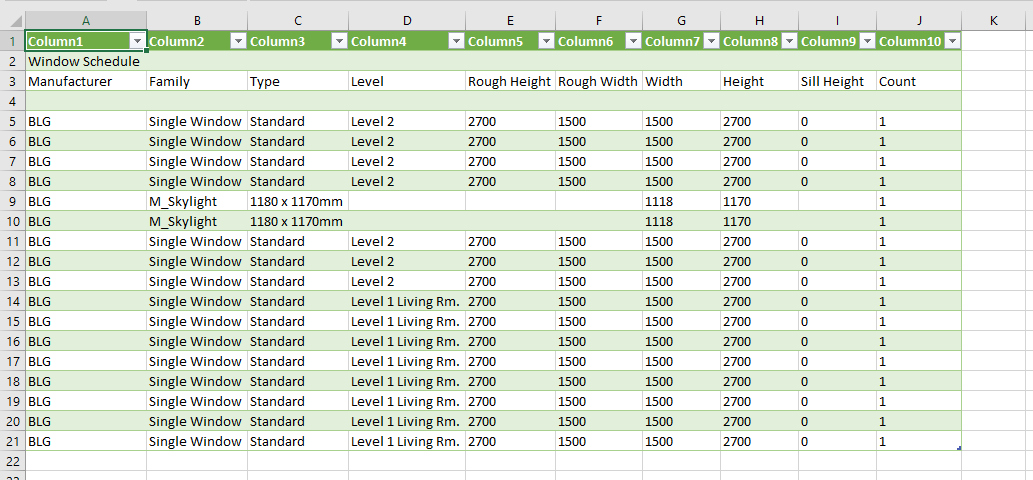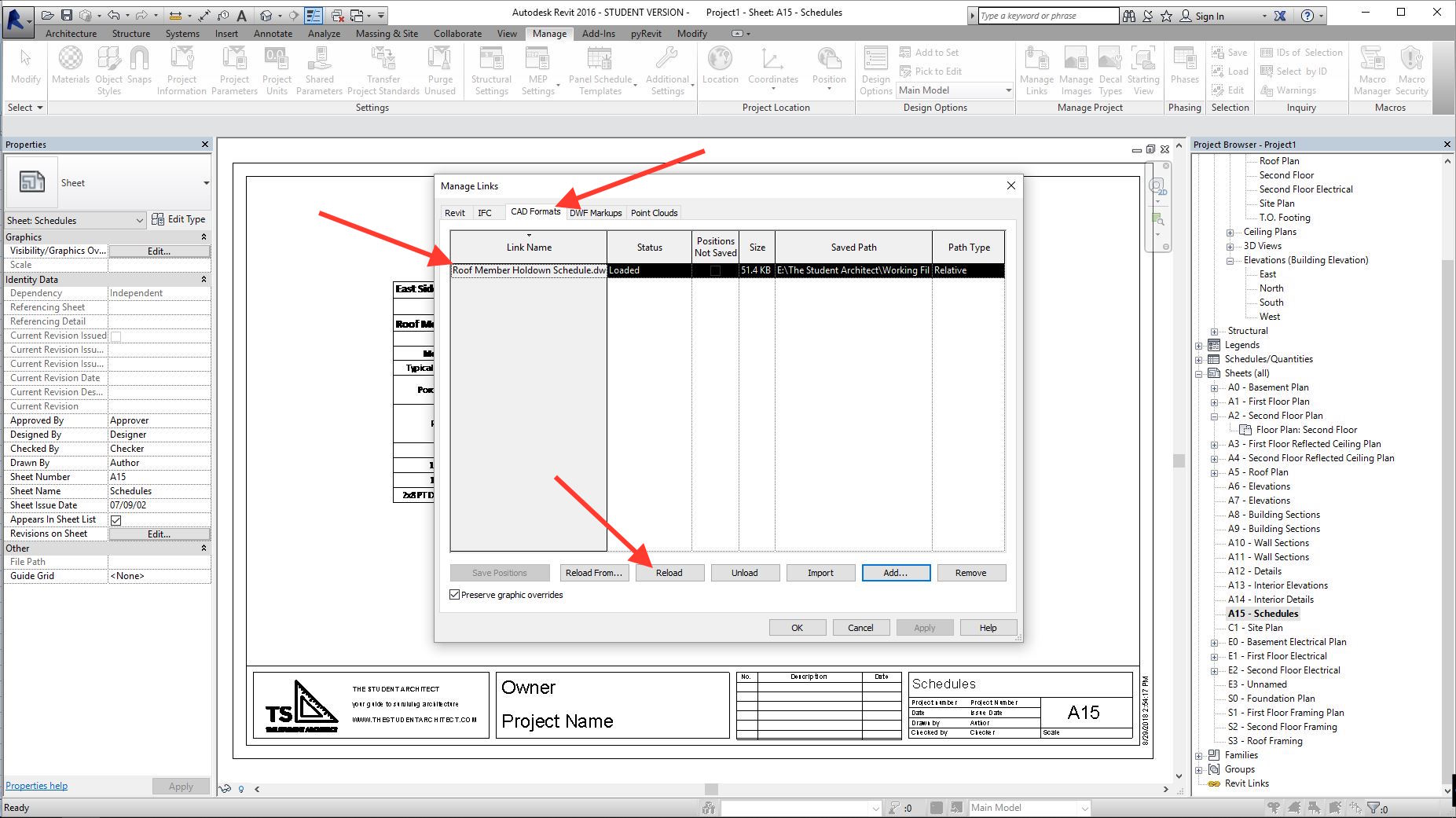Breaking Barriers: Excel Importation Techniques for Advanced Revit Users
Explore different data importation techniques and master Excel integration to improve your Revit modeling capabilities. With our pointers and techniques, you can get over importation difficulties and come to be a true expert in using Excel for your Revit projects.
Advanced Revit Users: Leveraging Excel for Importation
You can quickly leverage Excel for importation as an advanced Revit customer. Excel is a powerful tool that can significantly improve your process and effectiveness in Revit. With its capacity to handle big quantities of data and do intricate calculations, Excel can be an useful property in managing and organizing your task details.
One way to take advantage of Excel for importation is by making use of the "Link Excel" feature in Revit. This function permits you to connect an Excel spreadsheet directly into your Revit job, allowing you to upgrade and integrate data between both programs. When dealing with schedules or tracking changes in your job., this can be especially valuable.
An additional way to utilize Excel is by utilizing the "Import/Export" function in Revit. This function enables you to import and export information in between Revit and Excel, giving you the flexibility to work with data in both programs. You can import information from Excel right into Revit to produce aspects such as walls, rooms, or doors, and you can also export data from Revit to Excel for further analysis or reporting.

Exploring Data Importation Techniques in Revit Utilizing Excel
Checking out exactly how to import information from Excel into Revit uses effective techniques for incorporating info. When you import data from Excel, you can effortlessly move data such as space schedules, material listings, and equipment data into your Revit project. This process allows you to conserve time and initiative by staying clear of hands-on data entry.
To import data from Excel right into Revit, you can make use of the "Import/Export" function. This function enables you to map the Excel information areas to the equivalent Revit specifications, making sure that the info is properly assigned within the version. By picking the proper import choices, you can control how the information is imported and exactly how it engages with your task.
An additional technique for importing information from Excel into Revit is by using Eager beaver. Dynamo is an aesthetic shows tool that incorporates with Revit and allows you to automate operations and jobs. With Eager beaver, you can produce custom-made scripts that import information from Excel and adjust it within your Revit job. This method gives even extra versatility and customization alternatives.
Understanding Excel Integration for Advanced Revit Modeling
One key method is importing information from Excel spread sheets straight into your Revit design. With a few easy actions, you can map the Excel columns to the corresponding Revit specifications and import the information properly.
Another beneficial approach is exporting data from Revit to Excel. This allows you to draw out information from your design, such as timetables or material quantities, and analyze it in Excel using solutions, graphes, or other effective tools. By leveraging the capacities of Excel, you can perform complex calculations, produce custom-made records, and gain beneficial understandings right into your task.
In enhancement to information transfer, Excel assimilation can automate recurring jobs in Revit. By developing macros or manuscripts in Excel, you can automate procedures like producing views, producing sheets, or applying common family members - revit tools. This not only saves time but also makes certain uniformity throughout your job
To grasp Excel integration in Revit, it is crucial to understand the information framework and how Revit engages with Excel. By familiarizing yourself with the readily available devices and techniques, you can open the full potential of Excel combination and take your Revit modeling to the next level.
Overcoming Importation Obstacles: Excel Techniques for Revit Professionals
When getting rid of importation difficulties, it's essential to be acquainted with effective Excel techniques that can profit professionals in Revit. As an advanced Revit customer, you comprehend the importance of flawlessly importing data from Excel right into your jobs. However, you might experience numerous difficulties along the way. By utilizing reliable Excel techniques, you can get over these difficulties and boost your efficiency.

An additional beneficial technique is using the "Transpose" function in Excel. This allows you to transform information from rows to columns or vice versa. When importing information into Revit, this can be especially valuable when you have information in an upright style in Excel, however you need it to be in a straight layout in Revit.
Moreover, making use of Excel solutions such as VLOOKUP and INDEX-MATCH can greatly aid in mapping data from Excel to Revit. These formulas permit you to look for particular worths in Excel and retrieve corresponding data from one more column. This can save you effort and time when importing big datasets right into Revit.
Excel Data Importation Advice for Advanced Revit Users
By familiarizing on your own with efficient Excel pointers and techniques, you can boost your data importation procedure as an advanced customer of Revit. Excel is a powerful device that can significantly promote the see it here importation of data right into Revit, saving you time and enhancing your performance. One helpful idea is to use the "Text to Columns" function in Excel to divide data into various columns based upon a delimiter. This can be especially handy when you have data in a single column that requires to be divided into multiple columns in Revit. Furthermore, making use of Excel's "Paste Special" feature enables you to paste information from Excel into Revit find more info while maintaining formatting, such as cell shade or font design. When importing data that needs details format in Revit, this can be specifically useful. Another valuable technique is to make use of Excel's "Locate and Change" feature to swiftly make adjustments to your information before importing it into Revit. You can quickly replace certain text or characters with others, saving you the time and initiative of by hand modifying the information in Revit. By using these Excel ideas and techniques, you can improve your information importation process and end up being a lot more skilled in utilizing Revit.
Final Thought
You have currently discovered valuable strategies for importing data from Excel right into Revit as a sophisticated user. By leveraging the power of Excel assimilation, you can improve your modeling procedure and conquer any importation tests that may emerge. With these ideas and tricks, you will certainly be able to understand data importation and boost your Revit skills. So go in advance, break those obstacles and master your Revit tasks!

When importing information into Revit, this can be especially helpful when you have data in an upright layout in Excel, but you need it to be in a straight layout in Revit.
Furthermore, utilizing Excel solutions such as VLOOKUP and INDEX-MATCH can greatly help in mapping information from Excel to Revit. In addition, using Excel's "Paste Special" function enables you to paste information from Excel right into Revit while maintaining formatting, such as cell color or font style.